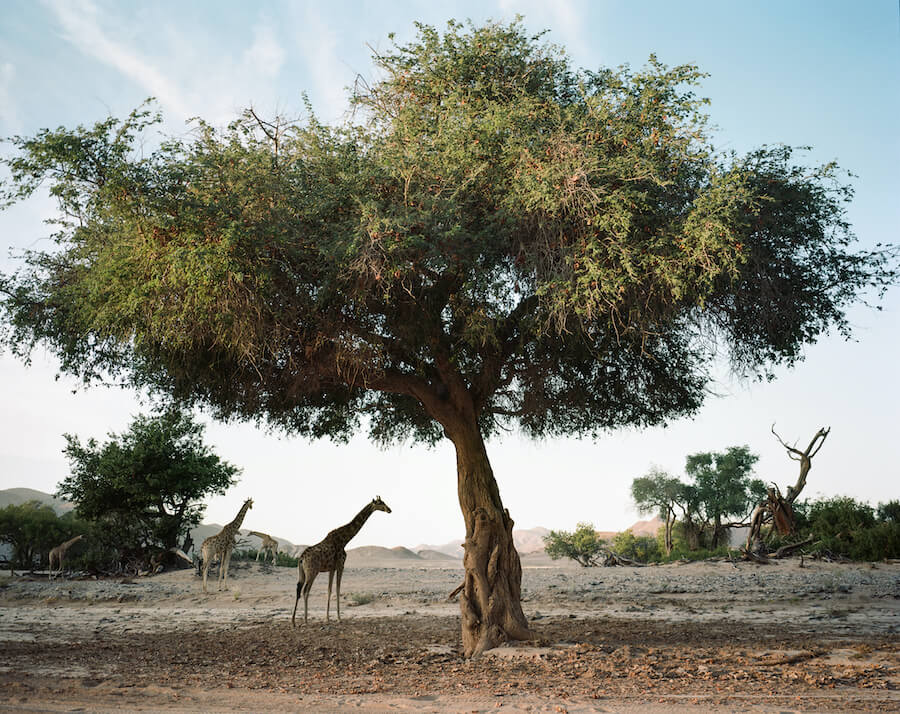Desert-Dwelling Giraffe Conservation
Focusing on awareness of giraffe declines in Africa and the continued conservation of desert-dwelling giraffes in northwest Namibia
In certain areas there might seem to be plenty of them, but giraffes across Africa are under threat, and together with the Giraffe Conservation Foundation, we’re creating a strong presence in northwest Namibia to further our understanding of this Angolan sub-species and create awareness of the plight of these stately and beautiful creatures.

Guests staying at Hoanib Valley Camp can learn about the Giraffe Conservation Foundation (GCF) from their guides, observing these remarkable creatures in this tough environment, and in turn helping to save the giraffes further afield by creating awareness back home. The GCF are the foremost experts on giraffes, and they’re also the only organization in the world that focuses on the conservation and management of giraffes in the wild throughout Africa. Based in Namibia, GCF currently work across 12 countries in Africa, including Chad, DRC, Kenya, Malawi, Niger, Tanzania, Uganda and Zambia. However, their pioneering focus is on the desert-dwelling giraffes in northwest Namibia.

Through their extensive work on the ground and partnerships with Governments, NGOs and universities, the GCF have identified four distinct species of giraffe, whereas before there was thought to be only one. This finding has elevated the conservation importance of the different populations with some giraffe populations so low in the wild that they are classified as Critically Endangered. In northwest Namibia, numbers of the desert-dwelling Angolan giraffe have increased over the past few decades, due to concerted conservation efforts of local communities, the Namibian Government, private tourism companies and NGOs including the GCF, and most recently Hoanib Valley Camp. Despite this, the population continues to face environmental pressures and their continued monitoring helps us to better understand and advise on their conservation.
Learn More Support This Project